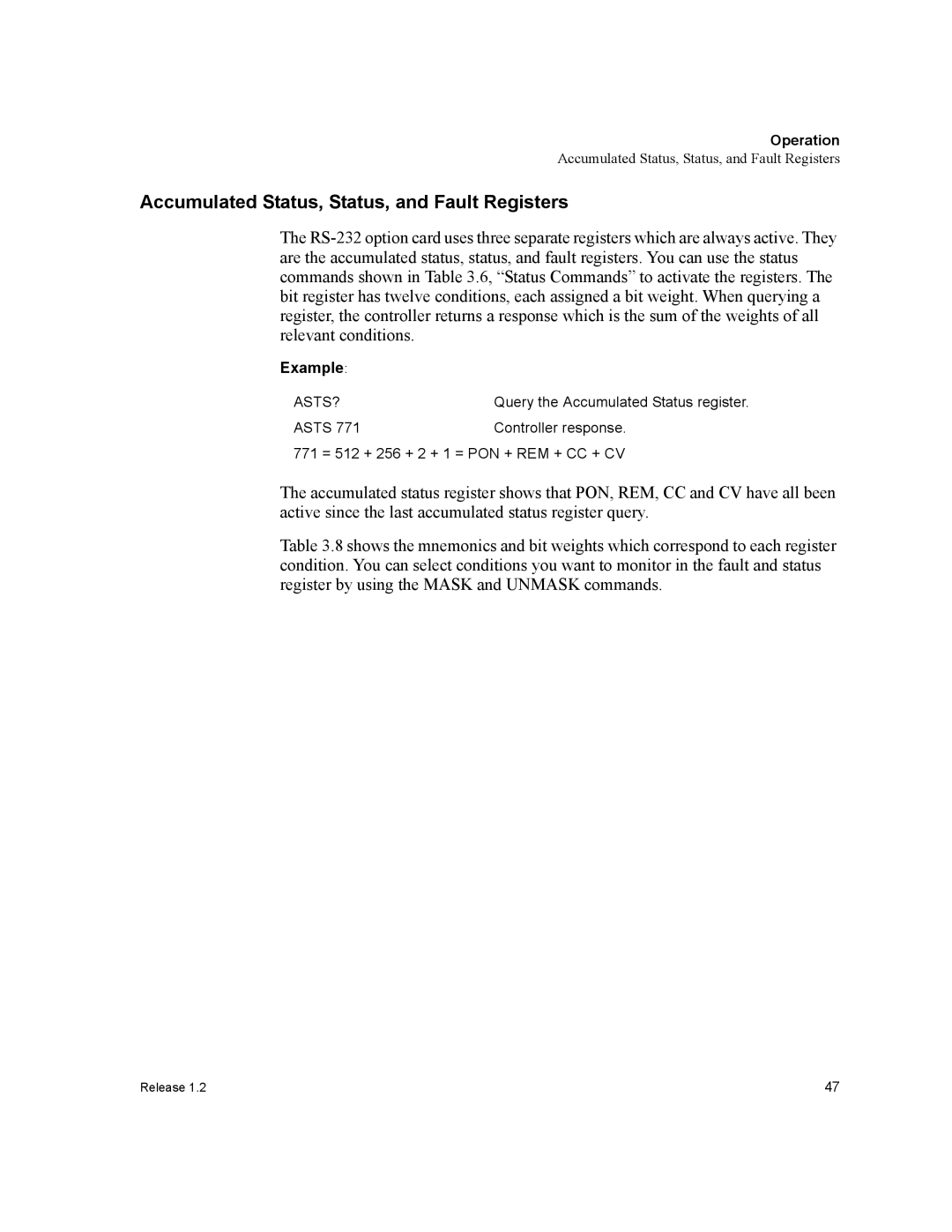Operation
Accumulated Status, Status, and Fault Registers
Accumulated Status, Status, and Fault Registers
The
Example:
ASTS? | Query the Accumulated Status register. |
ASTS 771 | Controller response. |
771 = 512 + 256 + 2 + 1 = PON + REM + CC + CV
The accumulated status register shows that PON, REM, CC and CV have all been active since the last accumulated status register query.
Table 3.8 shows the mnemonics and bit weights which correspond to each register condition. You can select conditions you want to monitor in the fault and status register by using the MASK and UNMASK commands.
Release 1.2 | 47 |
